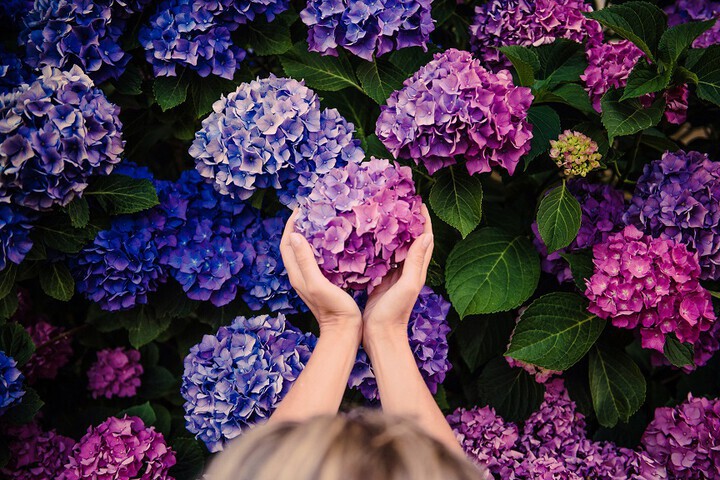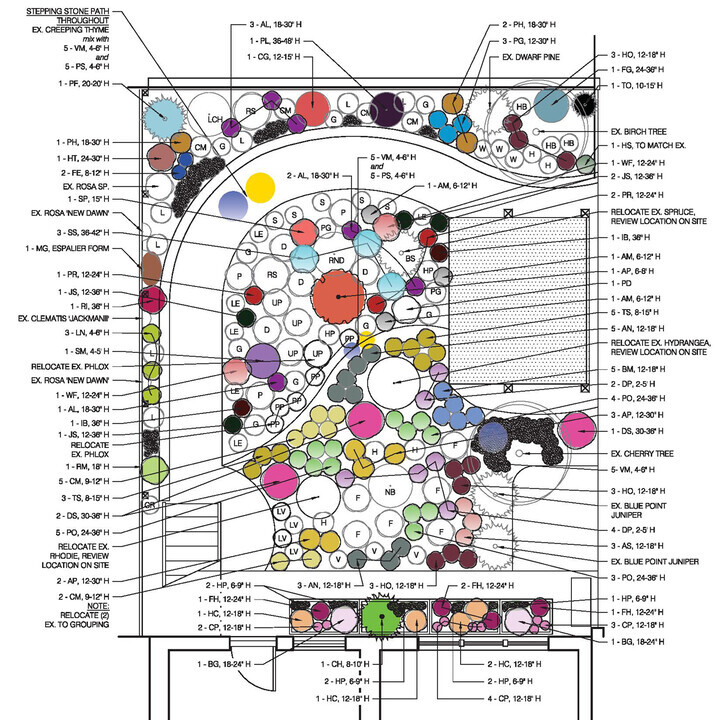These tips will help you organize your blooms by hue. The result? The prettiest ombré effect.
You can organize plenty of things by color, your garden included. Color mapping your flowers is a stylish way to arrange your outdoor space by hue, and it's easier to pull off than you might think. "A color-mapped garden is a way of planning a garden design—including bloom, foliage, and vegetables—according to color," says garden and landscape designer Amber Freda, who has a unique process (pictured below) for bringing her harmonious outdoor scenes to life. "A very simple way to do this would be to draw out the shape of your planting area, draw in bubbles that represent clumps of a particular type of plant, and then fill in those bubbles with colors using a marker, crayon, watercolor paint, or a drawing program on your computer."

Along with providing aesthetic appeal, mapping out your garden's colorways ahead of time can also streamline the planting process. "Creating a color-mapped garden design that feels cohesive and balanced in advance, rather than trying to do things on the fly, helps prevent the likelihood of winding up with haphazard, mismatched, or disorganized color schemes," explains Freda. Looking to color map your own backyard blooms at home? Freda's sage advice will help you get started.

Choose Your Hues Wisely
The first step to forging a gorgeous color-mapped garden is figuring out which hues you want to work with and making sure they complement each other. "Decide from the beginning which colors appeal to you most and pick a few that you think will look good together," Freda says. "Try drawing out each of those colors and placing them next to each other to test them."
Start Small
If you are a first-time color-mapper or struggling to decide on palette, Freda suggests sticking with just a handful of hues. "It's better to start with a smaller color palette of three to five colors for any given area," Freda says. "Less is usually more, so if it just doesn't look right, try subtracting colors until you get to a selection that works together."
Use a Color Wheel to Pick Your Palette
Not sure which shades work best together? Freda recommends consulting an old-fashioned color wheel. "Colors next to each other on the wheel tend to be more harmonious looking," she explains. "Colors that are opposite each other will create the greatest contrast and should be used in moderation."
Know Your Tones
Certain tones can make or break the ambience of your backyard retreat, which is why you should only employ hues that enhance the vibe you're after. "Cooler colors (like blue, green, and purple) tend to be more peaceful and calming to the eye, whereas warmer colors are more vibrant and exciting," she explains. "Additionally, pastels create a softer, relaxing feeling; bright colors are more energetic and stimulating."
When in Doubt, Go with White
If you find yourself stuck with open slots of garden space, Freda says you can't go wrong by planting white blooms and foliage. "White is a classic neutral color that will usually work well with most color schemes," she explains. "When you're designing your color map, you can just leave those bubbles clear."